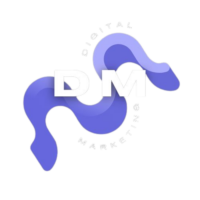The ever-increasing competition in today’s business environment demands that companies employ effective marketing strategies. One of the key aspects of successful marketing is understanding and targeting the right customers. Enter AI-driven customer segmentation – a game-changing approach to targeted marketing. In this article, we’ll explore the importance of customer segmentation, how AI enhances this process, and the benefits of implementing AI-driven segmentation.
The Importance of Customer Segmentation
Customer segmentation is a marketing strategy that divides a customer base into smaller, more manageable groups based on shared characteristics. These groups can be targeted with tailored marketing campaigns, resulting in higher engagement and conversion rates. Segmentation allows companies to allocate resources efficiently, maximize customer value, and stay ahead of the competition.
AI-Driven Customer Segmentation
Traditional Customer Segmentation
Traditional customer segmentation relies on manually analyzing customer data and identifying patterns. This process can be time-consuming and prone to errors. Furthermore, it often fails to account for the complexities and nuances of customer behavior, leading to suboptimal marketing outcomes.

How AI Enhances Segmentation
Artificial Intelligence (AI) is revolutionizing customer segmentation by automating and enhancing the process. AI algorithms can analyze vast amounts of customer data and identify intricate patterns that human analysts might miss. Some key AI technologies used in segmentation are:
Machine Learning
Machine learning algorithms can process and learn from large datasets, uncovering hidden patterns and relationships. These algorithms can automatically classify customers into segments based on their behavior, preferences, and demographic information.
Natural Language Processing
Natural language processing (NLP) allows AI algorithms to analyze unstructured data such as customer reviews, social media posts, and emails. By extracting insights from this data, AI can better understand customer sentiment and preferences, leading to more accurate segmentation.
Predictive Analytics
Predictive analytics uses AI to forecast customer behavior, allowing marketers to anticipate customer needs and preferences. This helps create highly targeted marketing campaigns that resonate with customers, increasing engagement and conversion rates.
Benefits of AI-Driven Segmentation
Implementing AI-driven customer segmentation offers numerous benefits, such as:
Improved Accuracy
AI algorithms can analyze massive amounts of data and detect subtle patterns that would be difficult for humans to identify. This results in more accurate customer segments, leading to more effective marketing campaigns.
Enhanced Personalization
AI-driven segmentation allows for more granular customer segments, enabling marketers to create highly personalized campaigns tailored to individual preferences and behaviors. This level of personalization fosters customer loyalty and increases the chances of conversion.
Scalability
AI-driven segmentation can handle vast amounts of data, making it suitable for companies of all sizes. As a company grows and its customer base expands, AI can easily scale up to analyze and segment the increasing data, ensuring that marketing efforts remain effective and targeted.
Cost-Effectiveness
By automating the customer segmentation process, AI reduces the need for manual analysis, which can be time-consuming and expensive. This allows companies to allocate resources more efficiently, lowering the overall cost of their marketing efforts.
Time-Efficiency
AI-driven segmentation is significantly faster than traditional methods, enabling marketers to quickly adapt their strategies and respond to changing customer preferences or market conditions. This agility helps companies stay ahead of the competition and capitalize on emerging opportunities.

Implementing AI-Driven Segmentation
Data Collection
The first step is gathering customer data from various sources such as CRM systems, social media, and website analytics. This data forms the foundation for AI algorithms to analyze and segment customers.
Model Training
Next, machine learning algorithms are trained on the collected data. During this phase, the algorithms learn to recognize patterns and relationships in the data, enabling them to segment customers accurately.
Model Deployment
Once trained, the AI models are deployed to segment customers in real-time or on a scheduled basis. These segments can then be used to inform marketing strategies and create targeted campaigns.
Ongoing Optimization
AI-driven customer segmentation is an ongoing process, requiring continuous optimization and refinement. As new data becomes available and customer preferences evolve, AI models should be regularly updated and retrained to ensure maximum accuracy and effectiveness.
The Future of AI in Content Marketing
As AI technology continues to evolve, its role in content marketing is only going to become more significant. With the ability to analyze large amounts of data and generate insights, AI is poised to revolutionize the way businesses approach their content marketing strategies.
One area where AI is likely to have a significant impact is in the area of voice search. With the increasing popularity of smart speakers like Amazon Alexa and Google Home, businesses will need to create content that is optimized for voice search. AI-powered tools can help businesses create and optimize this type of content more effectively.
Another area where AI is likely to have a significant impact is in the area of visual search. With the increasing use of visual search engines like Google Lens, businesses will need to create content that is optimized for this type of search. AI-powered tools can help businesses identify the most relevant visual content for their audience and optimize it for visual search engines.
Conclusion
AI-driven customer segmentation is a powerful tool for targeted marketing, offering numerous benefits such as improved accuracy, enhanced personalization, scalability, cost-effectiveness, and time-efficiency. By implementing AI-driven segmentation, businesses can better understand and serve their customers, ultimately driving growth and success.
FAQ's
What is customer segmentation? Customer segmentation is a marketing strategy that divides a customer base into smaller groups based on shared characteristics, allowing for tailored marketing campaigns that result in higher engagement and conversion rates.
How does AI enhance customer segmentation? AI enhances customer segmentation by automating and refining the process, using technologies like machine learning, natural language processing, and predictive analytics to analyze vast amounts of customer data and identify intricate patterns that human analysts might miss.
What are some benefits of AI-driven customer segmentation? Benefits of AI-driven segmentation include improved accuracy, enhanced personalization, scalability, cost-effectiveness, and time-efficiency.
How does AI-driven segmentation improve personalization? AI-driven segmentation allows for more granular customer segments, enabling marketers to create highly personalized campaigns tailored to individual preferences and behaviors, fostering customer loyalty and increasing conversion chances.
How can a business implement AI-driven customer segmentation? Implementing AI-driven customer segmentation involves several steps, including data collection, model training, model deployment, and ongoing optimization.
Follow me for more
Ask me any questions and I will get back to you in less than 24h.





